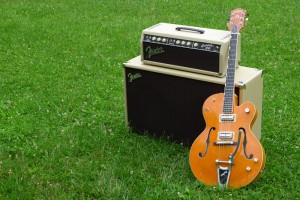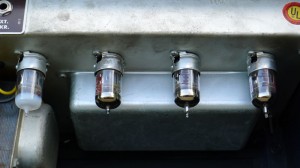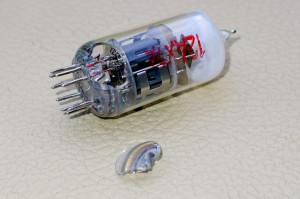

If you really want to know the technical details, check out How_Vacuum_Tubes_Work. They do a great job of detailing all the finer points of vacuum tube mechanics.
The offending tube was in the inverter position in this amp, which is why it was silent. Talk about your single points of failure! Anyway, I did what any seasoned tube amp snob would do—I got some oven mitts and gently pulled the ugly tube out. The now white-flashed tube popped out along with some other bits, which I must say, was slightly unsettling. I’ve been using tube amps for a long time, and spare bits falling from tube sockets is never a good thing.

So how did this happen? About a month prior, the amp head had fallen about a foot onto pavement. At the time, I fired up the amp and it worked fine. Relieved, I packed it back up and went about my business. My guess is that the impact caused a fracture that, over time, turned into the catastrophic vacuum failure you see here.
The lesson here is that you should not routinely slam your vintage tube amps on asphalt. There are delicate glass bottles inside which prefer to remain devoid of air. It would seem that these little chinese tubes weren’t designed to handle such abuse. Contrast those chinese tubes with the NOS American-made Tung Sol 5881 power tubes. Those tubes were designed to be used in B-52 bombers. They appear to be fine, though I must still advise that against dumping them on pavment.
Donate: PayPal Crypto:
ETH: 0x0AC57f8e0A49dc06Ed4f7926d169342ec4FCd461
Doge: DFWpLqMr6QF67t4wRzvTtNd8UDwjGTQBGs

The lesson here is that you should not routinely slam your vintage tube amps on asphalt. lol.
So did you go back to find the same rare preamp tubes or go with the ruby 12ax7a-c5?
I scored a bunch of the 80’s tubes and am hoarding them in my closet. 🙂
Some people actually prefer the Rubies, so if you can manage to try them both, I encourage some tube rolling.